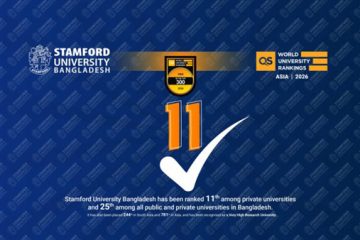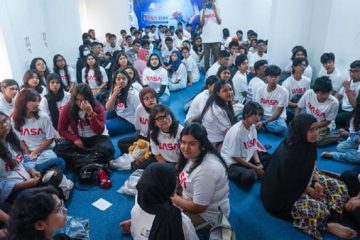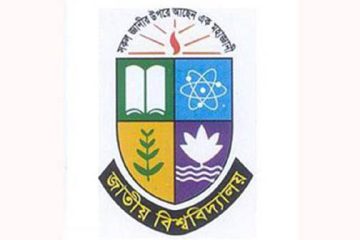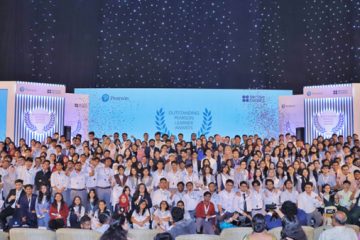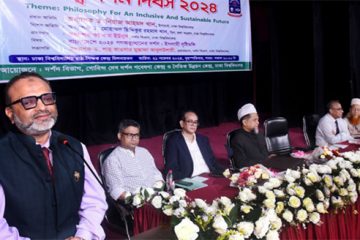Almost all (99.3 percent) the farmers use chemical pesticides for banana cultivation, according to a recent study.
The study says that for hopper control in banana, 37 percent farmers use Carrate, 33 percent use Sythrin and 22 percent use Ostad while to control fly, 36 percent of the farmers use Sumithion.
It reveals that about two-thirds (63.4 percent) of the banana farmers were high users of fungicides for disease control. Only one-third (33.3 percent) of the farmers do not use any fungicides in banana cultivation.
National Food Policy Capacity Strengthening Programme (NFPCSP) with the support of the European Union and USAID conducted the study titled ‘Effects of Using Chemicals and Hormones for Cultivation and Marketing of Vegetables and Banana’.
Principal Investigator of the study Prof Mohammad Hossain Bhuiyan and Prof M Sekender Ali, both of the Department of Agricultural Extension and Information System at Sher-e-Bangla Agricultural University, and Mohammad Mainuddin Molla of Bangladesh Agricultural Research Institute (BARI) jointly carried out the study with the support from NFPCSP.
The study was conducted to find out the effects of using chemicals and hormones in the cultivation and marketing of vegetables and banana, based on the perception of farmers, wholesalers and consumers, and chemical analysis at the BARI laboratories.
Data were collected from selected 150 vegetable farmers and 150 banana farmers of Narsingdi, Gazipur and Tangail districts. Data were also collected from the vegetable wholesalers nearer to the selected farmers’ villages and purposively selected 100 consumers of Dhaka city during the period January-June 2008.
The study shows that almost all (97.3 percent) the farmers use medium to high chemical fertilizers like urea, triple super phosphate (TSP), Muriate of Potash (MP), Zinc, Sulphur and boron fertilizers for banana cultivation.
The farmers of the study area mainly use urea, TSP, MP, Zinc, Sulphur and boron fertilizers. All (100 percent) the banana farmers use urea compared to 99.3 percent using TSP and MP while only 33.3 percent, 26 percent and 4 percent use Zinc, Sulphur and boron fertilizers respectively.
About 96 percent of the banana farmers were the high users of urea while almost all (98 percent) of the farmers were high users of TSP, according to the study.
An overwhelming 91.3 percent of the farmers were high users of MP while 8 percent were low to medium users. In case of Zinc fertilizers, two-thirds (66.7 percent) of the farmers were non-users while 2.0 percent, zero percent and 31.3 percent low, medium and high users respectively.
The study says that about three-fourths (74 percent) of the farmers did not use any Sulphur while 24 percent were high users. Almost all (96 percent) of the farmers were non-users of boron fertilizers and the rest 4 percent were high users.
To protect banana from rotting and physical spot, 35 percent farmers use Contaff, 31 percent use Shinkar and 21 percent use Cupravit-50 WP.
Almost all (96.7 percent) the banana farmers were high users of insecticides while only 3.3 percent of them did not use any insecticides in their banana fields.
Farmers of the study areas did not use any chemicals and hormones for banana harvesting, storing, transporting and marketing. But they used Litosen, Crop plus and Genimax as Plant Growth Regulators (PGR) for banana cultivation.
About two-fifths (40.7 percent) of the banana farmers were low users of PGR and 30.7 percent were medium users.
However, the banana wholesalers used ripening agents like Promote, Ripen-15, Tomtom, Ethrel, Ethophen, etc. Some of them used heat for ripening banana and some others did nothing for ripening.
The study says that three-fourths (74 percent) of the banana wholesalers used different types of ripening agent for quick ripening of banana.
The wholesalers of Shah Ali market at Mirpur and Karwan bazar in Dhaka city often drop banana in the liquid mixture of ripening agents like Carbide for quick ripening as well as for attractive colour.
Besides using ripening agents, the wholesalers drop the banana again in formalin to protect them from rotting.
About 52 percent of the banana wholesalers were the high users of ripening agents while 9 percent and 13 percent were low and medium users respectively. Only one-fourth (26 percent) of the wholesalers were no users of any ripening agent for quick ripening of banana.
Majority (71-76 percent) of the consumers perceive that the effect of excess use of chemical fertilizers and pesticides in vegetable and banana cultivation increase human diseases.
About 22-31 percent of the consumers perceive that using PGR in banana cultivation increase human diseases and food toxicity, degrade food taste and food value, and decrease crop shelf-life. About two-thirds of the consumers had no perception on the aspect.
More than half (55 percent) of the consumers had no perception on the effect of using ripening agent for quick ripening and attractive colour of banana. Only 45 percent consumers perceive that use of ripening agents decrease shelf-life of banana.
To overcome this problem some wholesalers use formalin to protect the banana from rotting after using ripening agents. More or less one-third (32-35 percent) of the consumers perceived that use of ripening agents might increase human diseases and food toxicity and might degrade food taste and food value.
The contents of total sugar, reducing sugar, non-reducing sugars, and Vitamin-C and total soluble solids were found to be higher in banana treated with ripening agents than in the fresh banana.
Based on group discussion of training-cum-workshop with the farmers, it was found that the total effect score of excess use of chemical fertilizers in vegetable and banana cultivation, degraded food taste ranked first followed by degraded food value, increased food toxicity, increased human diseases and creation of new human diseases.

